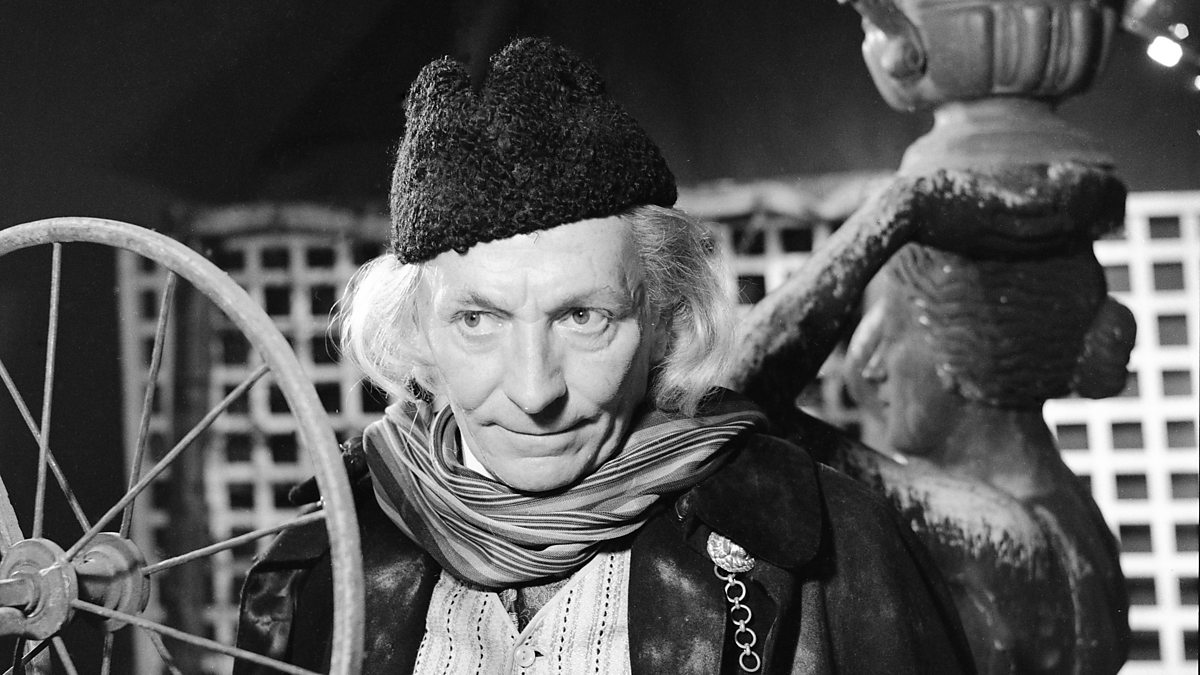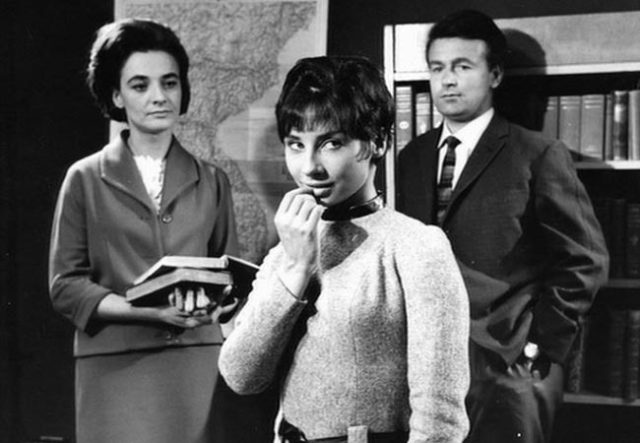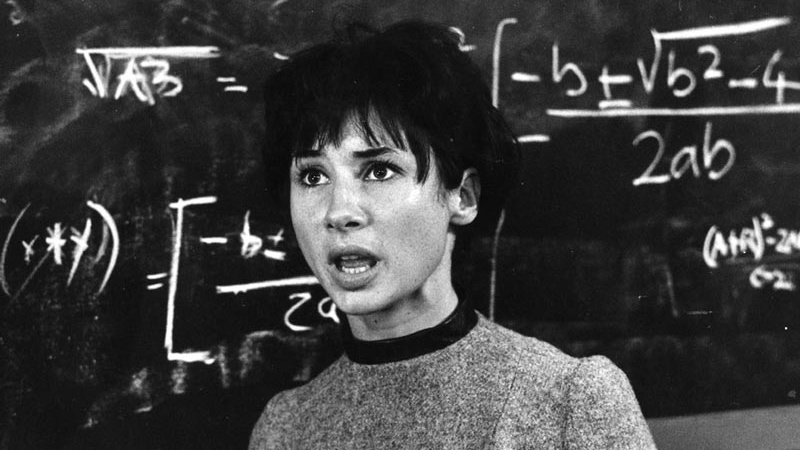The director of the first Doctor Who episode has revealed new details about the series’ origins, hidden within the pages of his diary.

Waris Hussein directed the very first Doctor Who episode ‘An Unearthly Child‘ back in 1963. He was there at the series’ genesis, and was involved in the casting of William Hartnell, the construction of the TARDIS set, and helping to develop the overall look and feel of the show.
And for those of you who have seen An Adventure in Space and Time, you will know what a troubled experience the production of the first Doctor Who episode really was. This was a docudrama penned by Mark Gatiss in 2013 which explored the series’ early years, with Waris Hussein being played by Sacha Dhawan, who would later become the Master opposite Jodie Whittaker’s Doctor.
The revelations of Waris Hussein’s diaries are an important piece of Doctor Who history, with their contents being revealed exclusively to the Radio Times.

And they make for fascinating reading. The first documented mention of the first Doctor Who episode – or indeed Doctor Who itself – is on the 29th May 1963, when he’s told that he will direct a Doctor Who serial after completing an episode of Moonstrike.
Interestingly, Hussein is far from taken with the programme, and notes that Doctor Who depresses him the more he thinks about it. In hindsight, this is understandable. At this point in the series’ history, the BBC was still defining what the programme really was and the scripts were virtually non-existent. Hussein knew that he would be directing a science fiction serial that would be partly set in the Stone Age, but he also knew that he would have to make all this happen within the limited confines of the Lime Grove Studios – a tiny production space with antiquated facilities.
And even then, Hussein was having trouble securing the TARDIS set for the first Doctor Who episode. It is only touched upon in the diary entries – with Hussein alluding to designer Peter Brachaki’s “vagueness” – but in An Adventure in Space and Time, Brachaki is portrayed as a man who isn’t overly keen on the idea of designing the Doctor’s time ship, and in the end cobbles together a half-hearted design in about 30 seconds.
In a later diary entry – dated in the summer of that year – Hussein describes the first Doctor Who episode as being “outrageously optimistic” and it is clear that he has serious anxieties about the whole project. At one point he ponders “what my future will be after all this has blown up in our faces” and he wonders if “Sydney Newman’s brainchild is quite impossibly monster-like.”
It is during this pre-production on the first Doctor Who episode that Waris Hussein actually consults a psychic to give him a horoscope reading, and meets with celebrity astrologer Helene Hoskins. According to Hussein, she would normally have been quite expensive, but offered to do his chart free of charge because he was in such a state.
“I went to see Helene,” Hussein writes. “She was very interesting about my horoscope and said it was extremely favourable which bucked me up considerably, though I don’t mind admitting that I still have my doubts about my future and what will happen to all of us.”
This is fascinating to read, some 60 years after the fact, as we all know that Hussein’s future was indeed “extremely favourable,” and that he and Verity Lambert (Doctor Who‘s original producer) were on the cusp of launching a national institution. But at the same time, it is clear that the production team kept hitting brick walls in their attempt to get the series onto the air.
One of these walls was the casting. For instance, Hussein had some frank words to say about the casting process for the character of Susan Foreman, explaining that he met with “a conveyor belt of articulating drama school products with toffees in their mouths,” adding that he had not yet seen one suitable actor to play the Doctor’s granddaughter.

Similarly, finding the titular actor for the first Doctor Who episode was equally troublesome – even if the actors didn’t quite have toffees in their mouths. “Cyril Cusack… [has] already declined our offers and I shan’t be surprised if Leslie French does the same,” he notes.
But they did eventually ‘settle’ for William Hartnell on the 12th July 1963, with Hussein writing: “Moonstrike came out on Thursday and I was so upset by its slowness and bad camera work that I could hardly go into the Centre the next day, and only did so because Verity and I had to interview William Hartnell for Dr Who. We had a full three hours, lunched by his agent Terry Carney, having already decided among ourselves that Hartnell would do.”
The pilot of the first Doctor Who episode was recorded on the 29th September, fraught with the technical difficulties that perpetuate the “devious world of television.” It is clear that Hussein was stretching Lime Grove’s capabilities to the max, “demanding a great deal of camera movement from the crew” who had to make do with “two heavy pedestals and two circular, Centre-type ones.” He also mentions the obstreperous TARDIS doors and William Hartnell’s fluffs.
And so, in the event, the first Doctor Who episode wasn’t quite the first Doctor Who episode, as Hussein was instructed to remount the whole production after receiving feedback from Sydney Newman.
“The cast in his opinion was not entirely successful,” Hussein writes. “He was disappointed because they showed no sense of humour in their performances, especially Bill who was not quaint and mischievous enough…
“Altogether the evening was negative except that although Sydney liked my handling of the thing he might ask us to do the thing again after we have seen the edited pilot on Tuesday. I don’t think I’d mind doing it again but I don’t want to change the cast. Meanwhile I’m looking at the second episode and my heart sinks at the thought of it.”
And the rest, as they say, is history.
This is only the first in a longer piece about Waris Hussein’s diaries, though, so it’s worth staying tuned to the Radio Times for more details. In the meantime, you can read the full extracts about the first Doctor Who episode here.









It’s a shame you felt the need to recycle the same old story about Peter Brachacki. The man was a visionary designer, his iconic designs have become part of the fabric of the show for 60 years, and he deserves to be remembered in more positive ways than the flippant and insulting scene in AAISAT. Just because some people care to remember someone a particular way, doesn’t make it accurate. He went on to become a Senior Designer at the BBC before his premature passing in 1980. In this of all years, we should be celebrating him, not perpetuating false clichés.